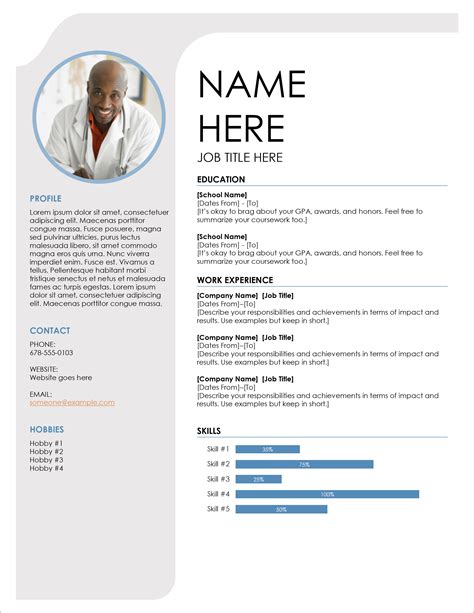Free Word Templates For Curriculum Vitae (Cv) In English

Looking for a job can be a daunting task, but having a well-crafted Curriculum Vitae (CV) can make all the difference. Your CV is often the first impression a potential employer will have of you, so it’s important to make it stand out. Luckily, there are many free word templates available online that can help you create a professional-looking CV in no time. In this post, we’ll guide you through the process of finding and using these templates, as well as provide tips on how to make your CV shine.
What is a Curriculum Vitae (CV)?
A Curriculum Vitae, commonly known as a CV, is a document that summarizes your education, work experience, skills, and achievements. It’s typically used when applying for academic, scientific, or research positions, as well as jobs in certain countries like the UK, Ireland, and New Zealand. Unlike a resume, which is usually limited to one or two pages, a CV can be as long as necessary to fully showcase your qualifications.
Where to Find Free Word Templates for CVs
There are many websites that offer free word templates for CVs, including:
- Microsoft Office Templates
- Hloom
- Indeed
These websites offer a variety of templates to choose from, so you can find one that suits your needs and style. Simply download the template, open it in Microsoft Word, and start editing.
Tips for Crafting a Stand-Out CV
1. Tailor your CV to the job
One of the most important things you can do to make your CV stand out is to tailor it to the job you’re applying for. This means highlighting the skills and experiences that are most relevant to the position. Take the time to read the job description carefully and customize your CV accordingly.
2. Use keywords
Many companies use automated systems to screen CVs before they’re even seen by a human. To ensure your CV makes it past this initial screening, be sure to include keywords from the job description. This will show the system that you’re a good match for the position.
3. Highlight your achievements
Don’t just list your job duties – highlight your achievements as well. This could include awards you’ve won, projects you’ve completed, or any other accomplishments that demonstrate your skills and abilities.
4. Keep it concise
While you want to showcase your qualifications, you also don’t want your CV to be too long. Aim for two to three pages at most, and use bullet points to make it easy to scan.
5. Use a professional format
When it comes to formatting your CV, less is more. Stick to a simple, professional format that’s easy to read. Use a clear font and make sure there’s plenty of white space to avoid overwhelming the reader.
6. Include a personal statement
A personal statement is a brief summary at the top of your CV that highlights your skills and experience. Use it to show the employer why you’re a good fit for the job and what you can bring to the table.
7. Proofread, proofread, proofread
Last but not least, be sure to proofread your CV carefully before submitting it. Typos and grammatical errors can make a poor first impression, so take the time to double-check your work.
FAQs
What should I include in my CV?
Your CV should include your personal information, education, work experience, skills, achievements, and any relevant certifications or licenses.
What format should my CV be in?
While there are many formats to choose from, most employers prefer a PDF or Microsoft Word document.
How long should my CV be?
Your CV should be as long as necessary to fully showcase your qualifications, but aim for no more than two to three pages.
What font should I use for my CV?
Stick to a clear, easy-to-read font like Arial or Times New Roman.
How do I tailor my CV to a specific job?
Read the job description carefully and highlight the skills and experiences that are most relevant to the position. Customize your personal statement and bullet points accordingly.
Should I include a photo on my CV?
While it’s common in some countries to include a photo on your CV, it’s not necessary in most cases. Check the employer’s guidelines before including a photo.
Can I use a template for my CV?
Absolutely! Using a template can save you time and ensure that your CV looks professional.
What should I avoid including in my CV?
Avoid including irrelevant or controversial information, such as your political or religious beliefs. Stick to information that’s relevant to the job.
How often should I update my CV?
It’s a good idea to update your CV every time you gain new skills or experiences. Keep it up-to-date so you’re always ready for new job opportunities.
Should I include references on my CV?
It’s not necessary to include references on your CV. If the employer wants references, they’ll ask for them separately.
How do I make my CV stand out?
To make your CV stand out, tailor it to the job, use keywords, highlight your achievements, keep it concise, use a professional format, include a personal statement, and proofread carefully.
Remember: Your CV is your chance to make a great first impression, so take the time to craft it carefully. Good luck!
